Hitler
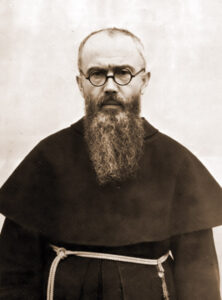 Heroes come from all walks of life, and you really never know who will become a hero and who won’t. In fact, I don’t think a hero even knows that the heroic in inside him, until the heroic is needed. Often the heroic comes from being faced with a situation that would require your life to save that of another. Such was the case for Maximilian Kolbe in 1941.
Heroes come from all walks of life, and you really never know who will become a hero and who won’t. In fact, I don’t think a hero even knows that the heroic in inside him, until the heroic is needed. Often the heroic comes from being faced with a situation that would require your life to save that of another. Such was the case for Maximilian Kolbe in 1941.
The Catholics didn’t really agree with the Jewish beliefs, and the Jews felt the same way about the Catholics beliefs, so when Hitler began rounding up the Jews, many Catholics and other religions, were quick to turn them over…it might have been to save their own lives, but they were handing them over to be killed, nevertheless…and they knew it. The non-Jews could pretend that everything was fine and the Jewish people who were taken, would be returned when things settled down, and maybe at first they truly thought that, but as time went by the truth was coming out. They now had a choice to make…a moral choice.
Kolbe was a Catholic priest during World War II. He saw what was going on with the Jewish people, when Hitler started rounding them up. Kolbe could read between the lines, as many people could in those horrific days, and he decided to help Jewish people escape the Nazis. Being a Catholic priest, he likely had more room that other 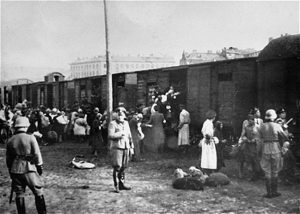 people might have had. He started harboring Jewish people and hiding them from the Nazis, keeping them safe from the public and any harm that might be afflicted upon them. As with many people who harbored Jews, Kolbe was soon caught, and was sent to Auschwitz for sheltering Jewish people.
people might have had. He started harboring Jewish people and hiding them from the Nazis, keeping them safe from the public and any harm that might be afflicted upon them. As with many people who harbored Jews, Kolbe was soon caught, and was sent to Auschwitz for sheltering Jewish people.
Auschwitz was one of the worst of Hitler’s torture chamber death camps, and it certainly proved to be just that for Kolbe. During his time at the horrid concentration camp, a prisoner escaped from the camp and as punishment, ten innocent prisoners had to starve to death in a hollow, concrete tube. One of the elected people started to cry and exclaimed that they had a wife and kids, so Kolbe spoke up and took his place so the man could be with this family. The prisoners were kept in the tube for the next two weeks. Most of them were already in a weakened and starved state, and so the prisoners inside the tube slowly began to die. Of the ten prisoners, Kolbe and  three other men managed to survive the torturous tube. One would think that if they survived the tube, they would be considered strong enough to bring out and put back to work, but the remaining prisoners were brought out of the tube and killed by being injected with Carbolic Acid. When it was his turn to receive the injection, Kolbe didn’t fight like the rest of the men, but instead, he gave his arm to the prison guard and never once made a fuss over it. One might think that Kolbe was just done with the whole mess, and maybe that was true, but it would have made no difference for him to fight. The guards had decided, and his fighting the injection would make no difference. Maximilian Kolbe died on August 14, 1941. He was 47 years old.
three other men managed to survive the torturous tube. One would think that if they survived the tube, they would be considered strong enough to bring out and put back to work, but the remaining prisoners were brought out of the tube and killed by being injected with Carbolic Acid. When it was his turn to receive the injection, Kolbe didn’t fight like the rest of the men, but instead, he gave his arm to the prison guard and never once made a fuss over it. One might think that Kolbe was just done with the whole mess, and maybe that was true, but it would have made no difference for him to fight. The guards had decided, and his fighting the injection would make no difference. Maximilian Kolbe died on August 14, 1941. He was 47 years old.
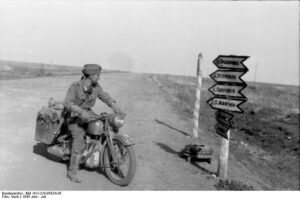 The German Kradmelder, motorcycle dispatch rider in English, could be used at any time in history, but in this case, they were used during World War II, specifically on the Eastern Front. The Eastern Front of World War II was a theatre of conflict between the European Axis powers against the Soviet Union (USSR), Poland and other Allies, which encompassed Central Europe, Eastern Europe, Northeast Europe (Baltics), and Southeast Europe (Balkans) from June 22, 1941 to May 9, 1945. The Soviet Union called it the Great Patriotic War, but everyone else called it the Eastern Front.
The German Kradmelder, motorcycle dispatch rider in English, could be used at any time in history, but in this case, they were used during World War II, specifically on the Eastern Front. The Eastern Front of World War II was a theatre of conflict between the European Axis powers against the Soviet Union (USSR), Poland and other Allies, which encompassed Central Europe, Eastern Europe, Northeast Europe (Baltics), and Southeast Europe (Balkans) from June 22, 1941 to May 9, 1945. The Soviet Union called it the Great Patriotic War, but everyone else called it the Eastern Front.
Dispatch riders were used by armed forces to get information from headquarters to the military units. They often didn’t have radios, and depending on the message, they might not have trusted the airwaves with some of the top secret messages. The Nazi Regime never really cared about its soldiers or its people, so the Kradmelder were sent out in the heat of summer or the frigid temperatures of winter. They were expendable, and that was all there was to it. Nevertheless, they played a vital role at a time when telecommunications were limited and insecure. They were also used to deliver carrier pigeons. The pigeons were used to send information back to headquarters, concerning the current situations on the front.
This type of dispatch was essential, but riding on an exposed vehicle in the Russian Winter, was brutal, and even deadly sometimes. During the winter the riders had better have protective clothing, or they could freeze to death.  The Kradfahrer (motorcycle rider) might wear a sentry’s fur-lined overcoat, heavy mittens, the fur-lined cap of the reversible winter suit, which is no doubt being worn beneath the overcoat, and a gas-mask for face protection…with the air filter canister removed from the gas-mask. Special extra eyepiece lens were issued for cold weather to prevent fogging by creating an airspace between the two lens.
The Kradfahrer (motorcycle rider) might wear a sentry’s fur-lined overcoat, heavy mittens, the fur-lined cap of the reversible winter suit, which is no doubt being worn beneath the overcoat, and a gas-mask for face protection…with the air filter canister removed from the gas-mask. Special extra eyepiece lens were issued for cold weather to prevent fogging by creating an airspace between the two lens.
In the summer, the German Kradmelder might wear his rubberized coat (Kradmantel) wrapped and buttoned around his legs to keep dirt and dust off his uniform. Personally, I can’t imagine wearing a rubberized coat in the summer simply to keep the dust off of a uniform. The rider would surly be melting from the heat, but the regime would require that the uniform be neat and clean at all times…even if it was soaked in sweat!! During World War II, the German military was the largest employers of motorcycles. On June 22, 1941 Germany launched its Operation Barbarossa, the 3-million-man invasion of the Soviet Union. The Kradmelder served a variety of functions including chauffeur service for officers, delivering dispatches, hot meals, as scouting patrols, as point vehicles taking the brunt of battle, sometimes as specially equipped tank destroyers. As with all motorcyclists, there was a kinship among these soldiers who called themselves “Kradmelder.” They bravely rode exposed without the armor plating of the Panzers Tanks and without the safety of hundreds of foot soldiers beside them. They were moving targets and sniper magnets. They never knew when they would encounter mine fields, artillery fire, and strafing aircraft, but they bravely went, because Hitler’s orders must be carried out…even if they died trying.
 Besides the known enemy, there was another enemy…the Russian weather. As Autumn approached, the roads had turned into nearly impassable bogs, the fields over which the motorcycles traveled turning in to “seas of jelly three feet more deep.” If that weren’t bad enough, Winter brought falling temperatures, often down to -40° Fahrenheit, causing engine oil and exposed soldiers froze solid. The “lucky” German Kradmelder benefited from special heating systems grafted onto their bikes, including foot and hand warmers. Still there were those who did not have these things, and even these things didn’t totally protect the rider. By the end of World War II, many if not most of the motorcycles, along with their riders, simply never returned home.
Besides the known enemy, there was another enemy…the Russian weather. As Autumn approached, the roads had turned into nearly impassable bogs, the fields over which the motorcycles traveled turning in to “seas of jelly three feet more deep.” If that weren’t bad enough, Winter brought falling temperatures, often down to -40° Fahrenheit, causing engine oil and exposed soldiers froze solid. The “lucky” German Kradmelder benefited from special heating systems grafted onto their bikes, including foot and hand warmers. Still there were those who did not have these things, and even these things didn’t totally protect the rider. By the end of World War II, many if not most of the motorcycles, along with their riders, simply never returned home.

 Recently, I ran across an article about drug use in among the Nazi regime. The article really caught my attention, because in many ways drug use among the Nazis made sense. The things they did to people would have been much easier if they were under the influence of drugs…mostly because they would be less likely to remember what they had done, and if they remembered, they would be less likely to care about what they had done. Drugs tend to dull the senses, and in many cases that makes the person relaxed and calm, but there are some drugs that make the person violent too. The article started out saying, “‘You can learn a lot about a culture from its drug use.’ Robert McAlmon, an American author living in Berlin during the tumultuous Weimar years, marveled that ‘dope, mostly cocaine, was to be had in profusion’ at ‘dreary night clubs’ where ‘poverty-stricken boys and girls of good German families sold it, and took it.’”
Recently, I ran across an article about drug use in among the Nazi regime. The article really caught my attention, because in many ways drug use among the Nazis made sense. The things they did to people would have been much easier if they were under the influence of drugs…mostly because they would be less likely to remember what they had done, and if they remembered, they would be less likely to care about what they had done. Drugs tend to dull the senses, and in many cases that makes the person relaxed and calm, but there are some drugs that make the person violent too. The article started out saying, “‘You can learn a lot about a culture from its drug use.’ Robert McAlmon, an American author living in Berlin during the tumultuous Weimar years, marveled that ‘dope, mostly cocaine, was to be had in profusion’ at ‘dreary night clubs’ where ‘poverty-stricken boys and girls of good German families sold it, and took it.’”
Over the years, a number of drugs have been banned, due to the danger of their use, the reactions of those taking them, or just that they are now deemed illegal. Cocaine was banned in 1924, but that has not really stopped it’s use. Like most drugs, if there is a “market” for it, someone will find a way to get the drug to the “customer.” Meth has become so easy to make and uses common (but poisonous) ingredients, so it has become the drug of choice for many drug addicts today. Some prescription drugs are addictive, and have become a part of the drug trafficking world too. Drugs like Opioids and Morphine are fairly easy to obtain from a doctor, because they hare used for many injuries and common ailments. Then they become addicted, and when they can no longer get a prescription for those drugs, they move on to illegal drugs.
Strangely, when the Nazis rose to power, illegal drug consumption actually fell. The Nazis regarded drugs as “toxic” to the German body. Drug users were given prison sentences, and addicts were classed…along with Jews, gypsies and homosexuals…as undesirable social elements. By the end of the 1930s, the Nazi pharmaceutical companies had turned away from opioids and cocaine, and moved towards synthetic stimulants. These could be produced entirely within Germany, per Nazi directive, of course. More money in the pocket of Hitler’s regime. “The transition from cabaret cocaine to over-the-counter meth helped fuel what German journalist Norman Ohler in his new book Blitzed: Drugs in the Third Reich calls the ‘developing performance society’ of the early Nazi era, and primed Germany for the war to come.”
I’m sure that the Third Reich, while calling it “developing performance society,” knew that the the use of these drugs was going to make the people taking the drugs more compliant to the government. Once a person is addicted to a drug, many will do anything to get a “fix,” including theft, robbery, breaking and entering, selling themselves, and even begging to get more. In 1937, the German pharmaceutical company called Temmler-Werke introduced Pervitin, which was a methamphetamine-based stimulant. The formula was developed by Dr Fritz Hauschild. He went on to pioneer East Germany’s sports doping program. Within a few months, this variant of crystal meth was available without a prescription, and was even sold in boxed chocolates. It was also widely adopted by people from all walks of life to elevate mood, control weight gain, and increase productivity. Pervitin’s success as an over-the-counter “wonder drug” caused a rebound in the country’s economic status after the war. The country came out of an economic depression to nearly full employment. Marketing for Pervitin claimed it would help “integrate shirkers, malingerers, defeatists, and whiners” into the rapidly expanding workforce. Students took it to cram for exams, while housewives took it to stave off depression. Pervitin use was so common that it became a normal part of life in the early Third Reich. For the military personnel of Hitler’s army, the chemical was a great weapon to fight the so-called “war on exhaustion.” The troops started relying on the “tank chocolate” to keep them alert for days on end. Before long, Nazi medical 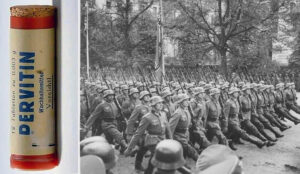 officials became increasingly aware of Pervitin’s risk factor. The tests performed on soldiers found that critical thinking skills declined the longer they stayed awake, even if the short-term gains were appealing enough. Even after drug sales to the general public were restricted in April 1940, the German Army High Command issued the so-called “stimulant decree,” ordering Temmler to produce 35 million tablets for military use. Of course, we know now that methamphetamine use is not only dangerous, but often deadly. The addictive effects alone can ruin lives. I don’t suppose Hitler cared much about that, as long as his troops obeyed his commands. I wonder how many men lost their lives because of the drug.
officials became increasingly aware of Pervitin’s risk factor. The tests performed on soldiers found that critical thinking skills declined the longer they stayed awake, even if the short-term gains were appealing enough. Even after drug sales to the general public were restricted in April 1940, the German Army High Command issued the so-called “stimulant decree,” ordering Temmler to produce 35 million tablets for military use. Of course, we know now that methamphetamine use is not only dangerous, but often deadly. The addictive effects alone can ruin lives. I don’t suppose Hitler cared much about that, as long as his troops obeyed his commands. I wonder how many men lost their lives because of the drug.
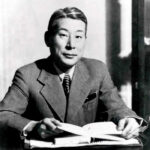 When we thing of people who were heroes for the Jewish people during World War II, we seldom think of true enemies of the Allied Nations. Still, there are people in all nations, no matter how evil the nation, who are good. One such man was Chiune Sugihara, a Japanese diplomat who served as vice-consul for the Japanese Empire in Kaunas, Lithuania. Sugihara was born on January 1, 1900 in Mino, Gifu prefecture, to a middle-class father, Yoshimi Sugihara and an upper-middle class mother, Yatsu Sugihara.
When we thing of people who were heroes for the Jewish people during World War II, we seldom think of true enemies of the Allied Nations. Still, there are people in all nations, no matter how evil the nation, who are good. One such man was Chiune Sugihara, a Japanese diplomat who served as vice-consul for the Japanese Empire in Kaunas, Lithuania. Sugihara was born on January 1, 1900 in Mino, Gifu prefecture, to a middle-class father, Yoshimi Sugihara and an upper-middle class mother, Yatsu Sugihara.
Sugihara became the vice-consul in 1939. His duties included reporting on Soviet and German troop movements, and to find out if Germany planned an attack on the Soviets and, if so, to report the details of this attack to his superiors in Berlin and Tokyo. As vice-consul, I’m sure he never expected to go against the orders of his superiors. I’m sure that he thought, as most of us do, that our country is the best one, and that our government is honorable and basically good…until we don’t. During the second world war, Sugihara made the decision…against orders from superiors…to help 6,000 Jews escape Europe by issuing transit visas to them, so that they could travel through Japanese territory. By doing this, he was risking his job and the lives of his family, but he knew that the things that were happening to the Jews were wrong, and he could not stand by and be a party to their deaths. The Jews that Sugihara helped were refugees from German-occupied Western Poland and Soviet-occupied Eastern Poland, as well as residents of Lithuania. I’m sure that Sugihara’s superiors didn’t want to anger their ally, Adolf Hitler, so they had told Sugihara to turn a blind eye to the fate of the Jewish people, and let the Nazis do what they wanted to do to them. But, Sugihara had a conscience, and he could not allow he Jews to be murdered in such a horrific fashion. He had to help as many as he could.
From July 18 to August 28, 1940, Sugihara being aware that Jewish visa applicants were in danger if they 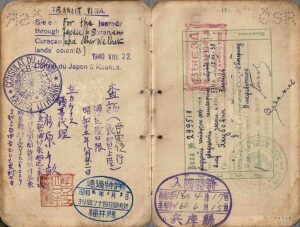 stayed behind, Sugihara decided to ignore his orders and issued ten-day visas to Jews for transit through Japan. Given his inferior post and the culture of the Japanese Foreign Service bureaucracy, this was an unusual act of disobedience. Sugihara spoke to Soviet officials who agreed to let the Jews travel through the country via the Trans-Siberian Railway…at five times the standard ticket price, of course. I guess there is no price too high…seriously. Sugihara continued to spend 18 to 20 hours a day writing hand-write visas, reportedly producing a normal month’s worth of visas each day, until September 4th, when he had to leave his post before the consulate was closed. While his time was cut short at that consulate, he had granted thousands of visas to Jews, many of whom were heads of households, thus permitting them to take their families with them. It is said that before he left, he handed the official consulate stamp to a refugee so that more visas could be forged, but his son, Nobuki Sugihara, insists that his father never gave the stamp to anyone. According to witnesses, he was still writing visas while in transit from his hotel and after boarding the train at the Kaunas Railway Station, throwing visas into the crowd of desperate refugees out of the train’s window even as the train pulled out. It was an insanely brave act, and it did not go unnoticed.
stayed behind, Sugihara decided to ignore his orders and issued ten-day visas to Jews for transit through Japan. Given his inferior post and the culture of the Japanese Foreign Service bureaucracy, this was an unusual act of disobedience. Sugihara spoke to Soviet officials who agreed to let the Jews travel through the country via the Trans-Siberian Railway…at five times the standard ticket price, of course. I guess there is no price too high…seriously. Sugihara continued to spend 18 to 20 hours a day writing hand-write visas, reportedly producing a normal month’s worth of visas each day, until September 4th, when he had to leave his post before the consulate was closed. While his time was cut short at that consulate, he had granted thousands of visas to Jews, many of whom were heads of households, thus permitting them to take their families with them. It is said that before he left, he handed the official consulate stamp to a refugee so that more visas could be forged, but his son, Nobuki Sugihara, insists that his father never gave the stamp to anyone. According to witnesses, he was still writing visas while in transit from his hotel and after boarding the train at the Kaunas Railway Station, throwing visas into the crowd of desperate refugees out of the train’s window even as the train pulled out. It was an insanely brave act, and it did not go unnoticed.
In 1985, the State of Israel honored Sugihara as one of the Righteous Among the Nations for his actions…the highest honor given to non-Jews.. He is the only Japanese national ever to receive it. The year 2020 was “The Year of Chiune Sugihara” in Lithuania. It has been estimated as many as 100,000 people alive today are the descendants of the recipients of Sugihara visas. When asked by Moshe Zupnik why he risked his career to save other people, he said simply, “I do it just because I have pity on the people. They want to get out so I let them  have the visas.”
have the visas.”
Chiune Sugihara died at a hospital in Kamakura, on July 31, 1986. Despite the publicity given him in Israel and other nations, Sugihara remained virtually unknown in his home country. I’m sure they didn’t consider him anything more than a criminal. Only when a large Jewish delegation from around the world, including the Israeli ambassador to Japan, attended his funeral, did his neighbors find out what he had done. His subsequent considerable posthumous acclaim contrasts with the obscurity in which he lived following the loss of his diplomatic career.

 A few days ago, my friends, Rikki and Tony Ramsey (who is stationed in Germany) and their three sons, Jameson, Jackson, and Jordan posted some pictures of a trip they took to Salzburg, Austria. On the way there, they went to a place in the mountains, and posted pictures of them in front of a large cross. It was the cross that caught my eye, but the story of the place that held my interest. In English the place is called the Eagle’s Nest, but in German it is the Kehlsteinhaus and it is a building and cross erected by the Third Reich atop the summit of the Kehlstein, a rocky outcrop that rises above Obersalzberg near the town of Berchtesgaden. This was not a church or a fancy mountain-top resort or restaurant…at least not then. It was used exclusively by members of the Nazi Party for government and social meetings, and was visited on 14 documented instances by Adolf Hitler, who disliked the location due to his fear of heights, the risk of bad weather, and the thin mountain air. Today, the building is owned by a charitable trust and is open seasonally to the public as a restaurant, beer garden, and tourist site. I’m sure Hitler would be furious about that.
A few days ago, my friends, Rikki and Tony Ramsey (who is stationed in Germany) and their three sons, Jameson, Jackson, and Jordan posted some pictures of a trip they took to Salzburg, Austria. On the way there, they went to a place in the mountains, and posted pictures of them in front of a large cross. It was the cross that caught my eye, but the story of the place that held my interest. In English the place is called the Eagle’s Nest, but in German it is the Kehlsteinhaus and it is a building and cross erected by the Third Reich atop the summit of the Kehlstein, a rocky outcrop that rises above Obersalzberg near the town of Berchtesgaden. This was not a church or a fancy mountain-top resort or restaurant…at least not then. It was used exclusively by members of the Nazi Party for government and social meetings, and was visited on 14 documented instances by Adolf Hitler, who disliked the location due to his fear of heights, the risk of bad weather, and the thin mountain air. Today, the building is owned by a charitable trust and is open seasonally to the public as a restaurant, beer garden, and tourist site. I’m sure Hitler would be furious about that.
The Kehlsteinhaus is located on a ridge atop the Kehlstein, a 6,017 feet subpeak of the Hoher Göll that rises above the town of Berchtesgaden. It construction was commissioned by Martin Bormann in the summer of 1937, and paid for by the Nazi Party. It took 13 months to complete, and whether is was the speed of its construction, or simply poor safety standards, twelve workers died during its construction. The road to Kehlsteinhaus is 13 feet wide and climbs 2,600 feet over 4 miles. To get to Kehlsteinhaus, the road goes through five tunnels and one hairpin turn. The road cost RM 30 million to build (about €150 million inflation-adjusted for 2007), which equals about 180,450,000 US dollars. Hitler’s birthday in April 1939 was considered a deadline for the project’s completion, so work continued throughout the winter of 1938, even at night with the worksite lit by searchlights. That explains the twelve deaths, I suppose.
Once you arrive, there is a large car park. From there, a 407 feet entry tunnel leads to an ornate elevator that ascends the final 407 feet to the building. Even the tunnel was elaborate. It was lined with marble and was originally heated, with warm air from an adjoining service tunnel. Most people walked into the elevator, but visiting high-officials were commonly driven through the tunnel to the elevator. Since the tunnel was to narrow to turn around, the driver then had to reverse the car for the entire length of the tunnel. The elevator was elaborate too, of course. The inside was surfaced with polished brass, Venetian mirrors, and green leather. The building’s main reception room is dominated by a fireplace of red Italian marble presented by Italian dictator Benito Mussolini, which was damaged by Allied soldiers chipping off pieces to take home as souvenirs. Hitler had the best of everything in the building. Unusual for 1937, the building had a completely electric appliance 
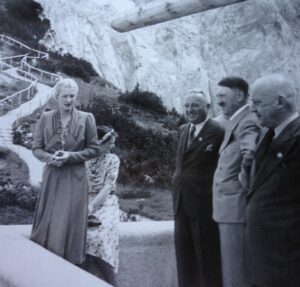 kitchen, but it was never used to cook meals…instead meals were prepared in town and taken to the kitchen on the mountain top to be reheated. Another extravagancy was the heated floors, with heating required for at least two days before visitors arrived. A MAN submarine diesel engine and an electrical generator were installed in an underground chamber close to the main entrance, to provide back-up power. Much of the furniture was designed by Paul László.
kitchen, but it was never used to cook meals…instead meals were prepared in town and taken to the kitchen on the mountain top to be reheated. Another extravagancy was the heated floors, with heating required for at least two days before visitors arrived. A MAN submarine diesel engine and an electrical generator were installed in an underground chamber close to the main entrance, to provide back-up power. Much of the furniture was designed by Paul László.
Hitler first visited on September 16, 1938, and returned to inaugurate it on April 20, 1939, his 50th birthday…though supposedly, it was not intended as a birthday gift. There are two ways to approach and enter the building…the road and the Kehlsteinhaus elevator. Hitler did not trust the elevator, continually expressed his reservations of its safety, and disliked using it. His biggest fear was that the elevator’s winch mechanism on the roof would attract a lightning strike. Bormann took great pains to never mention the two serious lightning strikes that occurred during construction. For a man who was supposedly such a “brave leader,” Hitler sure was afraid of a lot of things. The Kehlsteinhaus lies several miles directly above the Berghof, Hitler’s summer home. In a rare diplomatic engagement, Hitler received departing French ambassador André François-Poncet on October 18, 1938, there. It was he who actually came up with the name “Eagle’s Nest” for the building while later describing the visit. Since then, the name has remained. A wedding reception for Eva Braun’s sister Gretl was held there following her marriage to Hermann Fegelein on June 3, 1944. While Hitler more often than not left the entertaining duties to others, he believed the house presented an excellent opportunity to entertain important and impressionable guests. Often referred to as the “D-Haus,” short for “Diplomatic Reception House,” the Kehlsteinhaus is often combined with the teahouse on Mooslahnerkopf Hill near the Berghof, which Hitler walked to daily after lunch. Later, after the war, the teahouse was demolished by the Bavarian government, due to its connection to Hitler.
The Allies tried to bomb the Kehlsteinhaus in the April 25, 1945 Bombing of Obersalzberg, but the little house did not make an easy target for the force of 359 Avro Lancasters and 16 de Havilland Mosquitoes, which were sent to bomb Kehlsteinhaus, but instead, severely damaged the Berghof area. Undamaged in the April 25 bombing raid, the Kehlsteinhaus was subsequently used by the Allies as a military command post until 1960, when it was handed back to the State of Bavaria. The road to the Kehlsteinhaus has been closed to private vehicles since 1952 because it is too dangerous, but the house can be reached on foot (in two hours) from Obersalzberg, or by bus from the Documentation Center there. The Documentation Centre currently directs visitors to the coach station where tickets are purchased. The buses have special modifications to take on a 
 slight angle, as the steep road leading to the peak is too steep for regular vehicles. The Kehlsteinhaus itself does not mention much about its past, except in the photos displayed and described along the wall of the sun terrace that documents its pre-construction condition until now. The lower rooms of the structure are not part of the restaurant but can be visited with a guide. They offer views of the building’s past through plate-glass windows, including graffiti left by Allied troops that is still visible in the surrounding woodwork. The red Italian marble fireplace remains damaged by Allied souvenir hunters, though this was later halted by signage posted that the building was US government property, and damage to it was cause for disciplinary action. Hitler’s small study is now a storeroom for the cafeteria. Thanks to the Ramsey family for taking us along.
slight angle, as the steep road leading to the peak is too steep for regular vehicles. The Kehlsteinhaus itself does not mention much about its past, except in the photos displayed and described along the wall of the sun terrace that documents its pre-construction condition until now. The lower rooms of the structure are not part of the restaurant but can be visited with a guide. They offer views of the building’s past through plate-glass windows, including graffiti left by Allied troops that is still visible in the surrounding woodwork. The red Italian marble fireplace remains damaged by Allied souvenir hunters, though this was later halted by signage posted that the building was US government property, and damage to it was cause for disciplinary action. Hitler’s small study is now a storeroom for the cafeteria. Thanks to the Ramsey family for taking us along.
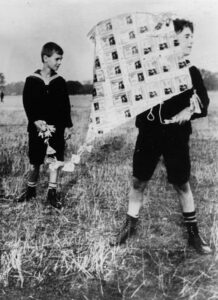
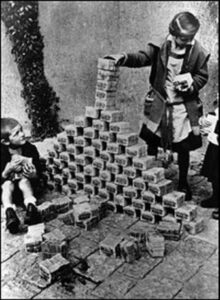 When inflation spirals out of control, as in post-World War I Germany, the country’s money soon becomes almost worthless. In 1923, when a battered Germany was struggling to recover from the war, the country was beset with hyperinflation and the German Mark became just that…virtually worthless. At one point, 4.2 trillion German marks was worth just one American dollar. Germany gradually spiraled into such an economic catastrophe that, by November 1923, the German Mark had so degraded that it took 200 billion Marks to buy a loaf of bread. No one in Germany had that kind of money. It was a disaster, and it brought about a number of bizarre events that would shock anyone who has never lived through it.
When inflation spirals out of control, as in post-World War I Germany, the country’s money soon becomes almost worthless. In 1923, when a battered Germany was struggling to recover from the war, the country was beset with hyperinflation and the German Mark became just that…virtually worthless. At one point, 4.2 trillion German marks was worth just one American dollar. Germany gradually spiraled into such an economic catastrophe that, by November 1923, the German Mark had so degraded that it took 200 billion Marks to buy a loaf of bread. No one in Germany had that kind of money. It was a disaster, and it brought about a number of bizarre events that would shock anyone who has never lived through it.
At some point people began to realize that they couldn’t buy anything with the money, so maybe the money needed to have a different use. One woman decided that since she didn’t have enough money for material to make a dress, she would use money to make the dress. Children were allowed to use stacks of banknotes to play with like blocks, and children made kites out of cash. Some people had an even better use for the money. They burned it for fuel. While all that might seem “funny,” not every effect was “funny.” One effect of the disaster was the destruction of middle class people’s savings, and Adolf Hitler exploited that one. He wasn’t having any financial difficulties, because he had control pf everything.
The crisis began during the First World War, when the German government printed unbacked currency and borrowed money to finance its dream of conquering Europe. It is always dangerous to print money with no gold to back it up. The government had an ingenious plan, however. They planned to pay off the debts by seizing resource-rich territories and imposing reparations on the vanquished Allies. I suppose that might have worked if they had not been beaten into submission in 1918. Then, Germany ended up with enormous debts alongside huge, punitive reparations owed to the Allies under the Treaty of Versailles. Inflation crept up slowly at first, before accelerating rapidly in late 1922. By autumn 1923, the country was in full economic collapse. The rate of inflation was 3,250,000% a month and prices for daily commodities doubled in a matter of hours.
During the crisis, workers paid by the hour found their wages were essentially worthless, because the prices had risen since they began their shifts. Pensioners on fixed incomes were the most badly hit and people’s life savings suddenly became worth less than a loaf of bread. Farmers eventually refused to bring produce into the city as the requirements to calculate and recalculate commercial transactions in the billions and trillions made it practically impossible to do business in cash. Storekeepers couldn’t do business fast enough to protect their cash receipts, so shops were abandoned. As people went through more and more panic situations, it led to uprisings. A far-left workers’ revolt in the industrial Ruhr region led to a 50,000-man ‘Red Army’ which took control of the area before being put down by the army. Adolf Hitler and the Nazi Party also attempted a failed government takeover in Munich, which became known as the Beer Hall Putsch.
The fever of hyperinflation finally broke in late 1923, when the government began issuing the new Rentenmark. The Rentenmark was a currency that was backed by mortgages on agricultural and industrial land, which was 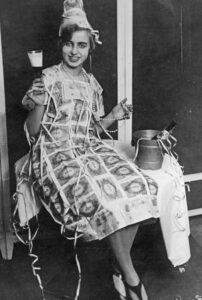
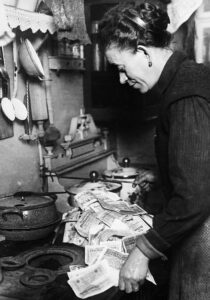 introduced with the old exchange rate of one US dollar to 4.2 Rentenmarks. It was a much more manageable difference for the people. The new currency’s foundation was shaky at best, but after going through years of terrifying instability, the German people were just desperate enough to trust it. Still, the German middle-class had been essentially ruined by the fiasco. The worst side-effect of the hyperinflation fiasco was that many members of the ruined middle classes ultimately became receptive to extremist propaganda, with many flocking to Adolf Hitler and the Nazi Party, as well as other anti-human ideologies like Communism. Sadly, when the system that they had been comfortable with failed because of the corruption of its leaders, they made the biggest mistake of all, they turned to the worst alternative as their new form of hope. That would prove an even bigger disaster in the coming World War II.
introduced with the old exchange rate of one US dollar to 4.2 Rentenmarks. It was a much more manageable difference for the people. The new currency’s foundation was shaky at best, but after going through years of terrifying instability, the German people were just desperate enough to trust it. Still, the German middle-class had been essentially ruined by the fiasco. The worst side-effect of the hyperinflation fiasco was that many members of the ruined middle classes ultimately became receptive to extremist propaganda, with many flocking to Adolf Hitler and the Nazi Party, as well as other anti-human ideologies like Communism. Sadly, when the system that they had been comfortable with failed because of the corruption of its leaders, they made the biggest mistake of all, they turned to the worst alternative as their new form of hope. That would prove an even bigger disaster in the coming World War II.

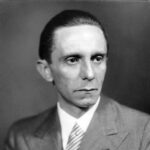 When the government forces a persecuted people to wear a label, that lets everyone around them know that they are a part of the group that anyone can persecute, it becomes one of the greatest atrocities known to mankind. Imagine a world where anyone has the right to beat, maim, and even kill another person in broad daylight and in front of witnesses, and face no repercussions for the atrocity committed. That was exactly the situation the Jewish people faced when, on May 29, 1942, on the advice of Nazi propaganda minister Joseph Goebbels, Adolf Hitler orders all Jews in occupied Paris to wear an identifying yellow star on the left side of their coats.
When the government forces a persecuted people to wear a label, that lets everyone around them know that they are a part of the group that anyone can persecute, it becomes one of the greatest atrocities known to mankind. Imagine a world where anyone has the right to beat, maim, and even kill another person in broad daylight and in front of witnesses, and face no repercussions for the atrocity committed. That was exactly the situation the Jewish people faced when, on May 29, 1942, on the advice of Nazi propaganda minister Joseph Goebbels, Adolf Hitler orders all Jews in occupied Paris to wear an identifying yellow star on the left side of their coats.
Most people, these days, can keep their beliefs to themselves, so they aren’t persecuted. We see it all the time. There are people right now, who don’t tell anyone that they are Christian (or Jewish) because they know that they will be hated, belittled, and persecuted simply because of their beliefs. It is against the law to murder…at this time, but it could change if we aren’t carful with the things we allow. This would be terrible, but nothing like the Yellow Star mandate was to the Jewish people. Hitler, along with his fellow government officials wanted 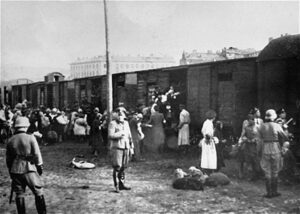 to dehumanize the Jewish people. One man, Joseph Goebbels, led the way on this. Goebbels had made the persecution, and ultimately the extermination, of Jews a personal priority from the earliest days of the war, often recording in his diary such statements as, “They are no longer people but beasts,” and “[T]he Jews… are now being evacuated eastward. The procedure is pretty barbaric and is not to be described here more definitely. Not much will remain of the Jews.” His hatred of the Jewish people was unrestrained.
to dehumanize the Jewish people. One man, Joseph Goebbels, led the way on this. Goebbels had made the persecution, and ultimately the extermination, of Jews a personal priority from the earliest days of the war, often recording in his diary such statements as, “They are no longer people but beasts,” and “[T]he Jews… are now being evacuated eastward. The procedure is pretty barbaric and is not to be described here more definitely. Not much will remain of the Jews.” His hatred of the Jewish people was unrestrained.
It is sad to think of this, and we can try to place the full blame on Hitler, Goebbels, or even the Nazis, but they were not the first to suggest this particular form of isolation. “The yellow star may make some Catholics shudder,” wrote a French newspaper at the time. “It renews the most strictly Catholic tradition.” Intermittently, throughout the history of the papal states, which is the territory in central Italy controlled by the pope, Jews were often confined to ghettoes and forced to wear either yellow hats or yellow stars. On July 14, 1555, Pope Paul IV issued the papal decree Cum Nimis Absurdum, which subjected Jews under his dominion to myriad 
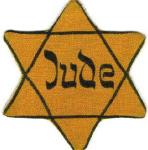 restrictions and humiliations, most notably forcing them to live in ghettos. He was an unusually rigid and anti-Jewish pope and this decree was one of his first actions, issued just two months after becoming pope. He also required that the ghettos be locked at night, the Jews were not allowed to own property and were required to identify themselves by wearing a yellow head covering. They were limited to primarily low-level trade jobs, and Jewish doctors were not allowed to have Christian patients. Nevertheless, Hitler’s Holocaust was the worst example of hatred imposed on the Jews in modern times.
restrictions and humiliations, most notably forcing them to live in ghettos. He was an unusually rigid and anti-Jewish pope and this decree was one of his first actions, issued just two months after becoming pope. He also required that the ghettos be locked at night, the Jews were not allowed to own property and were required to identify themselves by wearing a yellow head covering. They were limited to primarily low-level trade jobs, and Jewish doctors were not allowed to have Christian patients. Nevertheless, Hitler’s Holocaust was the worst example of hatred imposed on the Jews in modern times.
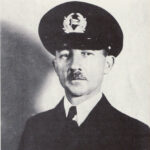
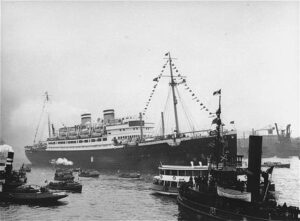 When Hitler’s reign of terror began, and the Jewish people soon realized that his goal was to wipe them from the face of the Earth, there was a mad scramble to get out of Germany and any other nation that was under Hitler’s control. Some people stayed, thinking that the war would be over soon, and many of those died. Others saw the writing on the wall, and started making plans to escape before it was too late.
When Hitler’s reign of terror began, and the Jewish people soon realized that his goal was to wipe them from the face of the Earth, there was a mad scramble to get out of Germany and any other nation that was under Hitler’s control. Some people stayed, thinking that the war would be over soon, and many of those died. Others saw the writing on the wall, and started making plans to escape before it was too late.
On May 27, 1939, a ship carrying 937 Jewish refugees was for the most part, turned away from Havana, Cuba, after admitting roughly 28 people onboard that had valid visas or travel documents. In my opinion, that was probably a blessing for those turned away, because as we all know, Cuba is not really they place that many people want to live. Nevertheless, it was a huge disappointment to the 909 Jewish refugees still on board. For seven days, the ship’s captain, Gustav Schröder, attempted to negotiate with Cuban officials, but they refused to comply. He then appealed to the United State and Canada for entry, and was also denied.
The SS Saint Louis had set sail on May 13, 1939 from Hamburg, Germany to Havana, Cuba. Six months earlier, 91 people were killed and Jewish homes, businesses, and synagogues were destroyed in what became known as the Kristallnacht massacre. It was becoming increasing clear that the Nazis were accelerating their efforts to exterminate Jews by arresting them and placing them in concentration camps. World War II and the formal implementation of The Final Solution were just months from beginning. Before they set sail, the refugees had applied for US visas, and planned to stay in Cuba until they could enter the United States legally. The Cuban government was not pleased with the planned stay in Cuba…even if it was temporary. Their impending arrival was greeted with hostility in Cuba before they even set sail. On May 8, there was a massive anti-Semitic demonstration in Havana. Right-wing newspapers claimed that the incoming immigrants were Communists.
The ship sailed closer to Florida, hoping to disembark there, but it was not permitted to dock. Some passengers attempted to cable President Franklin D Roosevelt asking for refuge, but he never responded. A State Department telegram stated that the asylum-seekers must “await their turns on the waiting list and qualify for and obtain immigration visas before they may be admissible into the United States.” As a last resort, the Saint Louis continued north to Canada, but it was rejected there, too. “No country could open its doors wide enough to take in the hundreds of thousands of Jewish people who want to leave Europe: the line must be drawn somewhere,” Frederick Blair, Canada’s director of immigration, said at the time.
After exhaustive appeals failed, the refugees were faced with no other options, the ship returned to Europe. On 
 June 17, the SS Saint Louis docked in Antwerp, Belgium. By the time they arrived, several Jewish organizations had secured entry visas for the refugees in Belgium, France, the Netherlands and Great Britain. The majority of the refugees who had traveled on the ship survived the Holocaust, but 254 died as the Nazis swept through Europe during Hitler’s horrible reign.
June 17, the SS Saint Louis docked in Antwerp, Belgium. By the time they arrived, several Jewish organizations had secured entry visas for the refugees in Belgium, France, the Netherlands and Great Britain. The majority of the refugees who had traveled on the ship survived the Holocaust, but 254 died as the Nazis swept through Europe during Hitler’s horrible reign.

 Many people know that April 20th is Hitler’s birthday, not that most of us would celebrate that fact. Nevertheless, for the Allies in World War II, at least on April 20, 1945, that day meant something. Not because it was Hitler’s birthday…no, it was because the Allies had a plan. The Germans had been in control in much of Italy, and their advancement had to be stopped. As always, there were multiple campaigns planned on any given day in the war. One planned attack, called Operation Corncob, was to send Allied bombers into Italy to begin a three-day attack on the bridges over the rivers Adige and Brenta to cut off the German lines of possible retreat on the peninsula. They knew that Hitler would be otherwise occupied, it being his birthday and all…and so he was.
Many people know that April 20th is Hitler’s birthday, not that most of us would celebrate that fact. Nevertheless, for the Allies in World War II, at least on April 20, 1945, that day meant something. Not because it was Hitler’s birthday…no, it was because the Allies had a plan. The Germans had been in control in much of Italy, and their advancement had to be stopped. As always, there were multiple campaigns planned on any given day in the war. One planned attack, called Operation Corncob, was to send Allied bombers into Italy to begin a three-day attack on the bridges over the rivers Adige and Brenta to cut off the German lines of possible retreat on the peninsula. They knew that Hitler would be otherwise occupied, it being his birthday and all…and so he was.
Hitler was actually occupied for more reasons than just his birthday, as Soviet artillery had begun shelling Berlin at 11am on his 56th birthday. Preparations were being made to evacuate Hitler and his staff to Obersalzberg to make a final stand in the Bavarian mountains, but Hitler refused to leave his bunker. So, Hermann Göring and Heinrich Himmler left the bunker for the last time. Operation Herring had begun the day before, with American aircraft dropping Italian paratroopers over Northern Italy, and with Operation Corncob came the other half of the attack, which was to remove the bridges and thereby halt the expected retreat of the German forces. I doubt if Hitler knew anything about these attacks, I’m sure his mind was on his upcoming suicide, a death which some say didn’t really take place, and a fact which we will never know for sure.
The Allied attacks of April 1945 on the Italian front, were intended to end the Italian campaign and the war in Italy, and to decisively break through the German Gothic Line, the defensive line along the Apennines and the River Po plain to the Adriatic Sea and swiftly drive north to occupy Northern Italy and get to the Austrian and Yugoslav borders as quickly as possible. Unfortunately, German strongpoints, as well as bridge, road, levee and dike blasting, and any occasional determined resistance in the Po Valley plain slowed the planned sweep down. Allied planners decided that dropping paratroops into some key areas and locales south of the River Po might help wreak havoc in the German rear area, attack German communications, and vehicle columns, further disrupting the German retreat, and prevent German engineers from blowing up key structures before Allied spearheads could exploit them. Lieutenant General Sir Richard McCreery, commander of the Commonwealth 8th Army, had a number of Italian paratroopers at hand for the task.
Meanwhile, Adolf Hitler celebrated his 56th birthday with a traditional parade and full celebration, while a 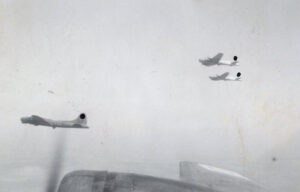
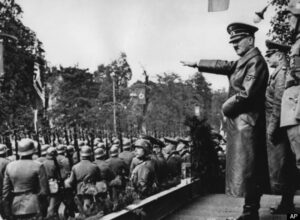 Gestapo reign of terror took the lives by hanging of 20 Russian prisoners of war and 20 Jewish children, at least nine of which were under the age of 12. All of the victims had been taken from Auschwitz to Neuengamme, the place of execution, for the purpose of medical experimentation. Hitler and his Third Reich didn’t fully understand it then, but they were finished, and the end was coming quickly.
Gestapo reign of terror took the lives by hanging of 20 Russian prisoners of war and 20 Jewish children, at least nine of which were under the age of 12. All of the victims had been taken from Auschwitz to Neuengamme, the place of execution, for the purpose of medical experimentation. Hitler and his Third Reich didn’t fully understand it then, but they were finished, and the end was coming quickly.

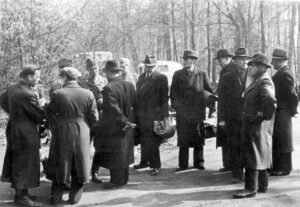 Being arrested is probably one of the scariest things that can happen to a person, especially when they have done nothing wrong. For most of us, that will never happen, but it could, if our government is corrupt and run by a dictator. Such was the case in Nazi Germany. After Hitler was elected, he began to dismantle the police department, filling it with men who were loyal to him. Then, he gave them unlimited authority to go after anyone who disagreed with his plan. These people were not guilty of any crime, they were simply on the wrong side of the political and spiritual agenda of the time.
Being arrested is probably one of the scariest things that can happen to a person, especially when they have done nothing wrong. For most of us, that will never happen, but it could, if our government is corrupt and run by a dictator. Such was the case in Nazi Germany. After Hitler was elected, he began to dismantle the police department, filling it with men who were loyal to him. Then, he gave them unlimited authority to go after anyone who disagreed with his plan. These people were not guilty of any crime, they were simply on the wrong side of the political and spiritual agenda of the time.
The Nazis set out to control every aspect of the lives of the people now under their control…making them little more than servants. It was a very dehumanizing system, whether the people were Jewish, Christian, Agnostic, or Atheist. Even the people who were in Hitler’s “good graces,” knew that one false move would end life as they knew it, or even get them killed. The Third Reich was the final authority in all things…at least at the time. The people were even subject to Hitler’s rules in the privacy of their own homes. The neighbors, and even some of their family members, became spies for the Third Reich. Once a “violation” was reported by anyone, the “perpetrator” was arrested, commonly in the middle of the night, hauled away, and often, never seen again. The Nazi leadership dramatically redefined the role of the police, giving them broad powers, completely independent of judicial review, to search, arrest, and incarcerate real or perceived state enemies and others they considered criminals.
Once a person was arrested, the police could do anything they chose to them to get them to talk…confess to their crimes. The victims of the police taken to Gestapo Headquarters where they were raped, beaten, tortured, enslaved, starved, and often killed, with no repercussions against the police at all. Their actions were considered above the law. They could even do those things to the people on the street, who were not under arrest for anything. The Supreme Court of that day, failed to challenge or protest the loss of judicial authority at this time. In general, it approved of the Nazi leadership’s decisive action. Further, the Supreme Court had been the court of first instance for treason cases since the Imperial period but, by the 1930s, it was overburdened with such trials and had endured relentless criticism from all sides for the judgments it rendered. The court was ultimately relieved to have responsibility for political crimes removed from its jurisdiction. It was another way to remove power from it’s proper place, and put it in the hands of the police, and ultimately Hitler.
The Secret State Police, called the Gestapo, which investigated political opposition, and the Criminal Police, called the Kripo, which handled all other types of criminal activity, were the two civilian forms of law enforcement officers. In addition, Hitler had the SS or the SA, which also imposed public order, but were considered paramilitary forces. The Gestapo was often used “protective custody” (Schutzhaft) to incarcerate people indefinitely, without specific charge or trial. These people were deemed to be potentially dangerous to the security of the Reich. Protective custody had been introduced in the German general law code before World War I to detain individuals for their own protection or to avert an immediate security threat if there were no other recourse. Do not be fooled by this. It was anything, but protective. The Gestapo employed protective custody to arrest political opponents at first, but later Jews, as well as Jehovah’s Witnesses who, because of religious conviction, refused to swear an oath to the Nazi German state or to serve in the armed forces. So, now the people could not speak out politically or religiously, and remember that their gun were also gone. It was a precarious place to be. Hitler was in charge, and he considered anyone who opposed him expendable.
So just imagine, you are asleep in your bed, after a nice Easter dinner with your family, and there comes a knock at the door…or rather a pounding at the door. The door bursts open and the police come in and drag your husband, wife, or even children away with barely a word spoken. No one was exempt. Kids could speak the 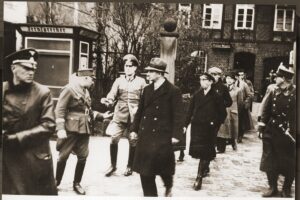
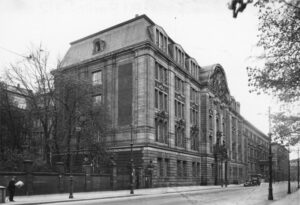 wrong things too. Of course, usually parents were the ones hauled away for what they taught the children. Children were taken into “protective custody” to be retrained in “proper” thinking…in other words, Nazism. Those were perilous times, and times that should never be forgotten. Failing to remember the horrors of the past, opens us up to a repetition of past mistakes in a future time.
wrong things too. Of course, usually parents were the ones hauled away for what they taught the children. Children were taken into “protective custody” to be retrained in “proper” thinking…in other words, Nazism. Those were perilous times, and times that should never be forgotten. Failing to remember the horrors of the past, opens us up to a repetition of past mistakes in a future time.

